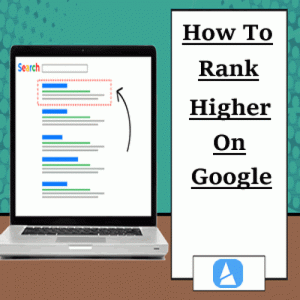
Understanding Google’s Ranking Factors
How to rank your site on google – Optimizing your website for Google’s search engine results pages (SERPs) requires a deep understanding of the factors that influence ranking. While Google’s algorithm is famously complex and constantly evolving, some key elements consistently contribute to higher rankings. This section will explore several crucial aspects of website optimization.
Website Speed
Website speed significantly impacts search engine ranking. Faster loading times improve user experience, leading to lower bounce rates and increased engagement. Google prioritizes sites that offer quick and efficient browsing. A slow-loading website frustrates users, causing them to leave before engaging with your content. This negative user experience signals to Google that your site is not providing a satisfactory user experience, thus negatively affecting your ranking.
Tools like Google PageSpeed Insights can help analyze your website’s speed and identify areas for improvement. Optimizing images, minimizing HTTP requests, and leveraging browser caching are common strategies for enhancing website speed.
Mobile-Friendliness
In today’s mobile-first world, mobile-friendliness is paramount. Google’s mobile-first indexing means that the mobile version of your website is the primary version Google uses to crawl and index your content. A mobile-unfriendly site will likely suffer from lower rankings and reduced visibility. Ensuring your website is responsive and adapts seamlessly to different screen sizes is essential. This involves using responsive design principles, testing your site across various devices, and employing techniques like using viewport meta tags to optimize the display on smaller screens.
High-Quality Content
High-quality content remains a cornerstone of successful . Google’s algorithms are designed to reward websites that provide valuable, original, and engaging content that satisfies user search intent. This means creating well-written, informative, and comprehensive content that directly addresses the needs and interests of your target audience. In addition to text, consider using multimedia elements such as images, videos, and infographics to enhance engagement and improve the overall user experience.
Content that is thin, duplicated, or -stuffed will generally perform poorly.
User-Friendly Website Structure
A well-structured website is crucial for both users and search engines. Clear navigation, logical organization, and easy-to-find information are essential for a positive user experience. This includes using intuitive menus, clear headings, and internal linking to guide users through your website. A well-structured site also allows search engine crawlers to easily access and index your content, improving your website’s overall visibility.
Think of site architecture as a roadmap, guiding both users and search engines to the desired information. Internal linking helps to create this roadmap.
Factors Contributing to Site Authority
| Backlinks | Domain Age | Content Quality | User Engagement |
|---|---|---|---|
| High-quality backlinks from reputable websites significantly boost a site’s authority. These links act as votes of confidence, indicating to Google that your site is trustworthy and relevant. | Older domains generally have a higher level of trust and authority, indicating long-term presence and stability. | Consistent production of high-quality, original, and engaging content is fundamental to establishing authority. | Metrics like bounce rate, time on site, and pages per visit indicate user engagement and satisfaction, indirectly influencing authority. |
Off-Page Optimization Strategies: How To Rank Your Site On Google
Off-page optimization focuses on activities outside your website that influence your search engine rankings. Building a strong online presence through various channels is crucial for boosting visibility and driving organic traffic. A robust off-page strategy complements on-page optimization, creating a synergistic effect that enhances your website’s overall authority and ranking potential.
The Benefits of High-Quality Backlinks
High-quality backlinks are essentially votes of confidence from other websites. Search engines interpret these links as endorsements, indicating that your website offers valuable and relevant content. The more high-quality backlinks you acquire, the higher your website’s authority and trustworthiness become in the eyes of search engines, leading to improved search rankings. Backlinks from authoritative, relevant websites carry significantly more weight than those from low-authority or irrelevant sites.
For example, a backlink from a respected industry news site will have a far greater impact on your rankings than a backlink from a spammy blog.
Reliable Sources for Acquiring Backlinks
Several reliable sources can help you acquire high-quality backlinks. Guest blogging on reputable websites within your niche allows you to include a link back to your site within your author bio or within the article itself. Participating in relevant online communities and forums, and contributing valuable insights, can also lead to natural backlinks if your contributions are highly regarded.
Collaborating with other websites through content partnerships, where you mutually link to each other’s relevant content, is another effective strategy. Finally, securing backlinks through high-quality, shareable content that naturally attracts links from other websites is a long-term, sustainable approach.
Comparison of Backlink Acquisition Strategies
Different backlink acquisition strategies vary in their effectiveness and risk. Guest blogging offers a relatively low-risk, high-reward approach, provided the websites you target are reputable. Content partnerships are mutually beneficial and generally safe. However, strategies like buying backlinks or participating in link schemes carry significant risk. Search engines actively penalize websites engaging in these manipulative tactics, potentially leading to a significant drop in rankings or even removal from search results.
Focusing on building high-quality content that naturally attracts backlinks is the most sustainable and least risky long-term strategy.
Creating Engaging Social Media Content to Drive Traffic
Social media platforms offer valuable opportunities to drive traffic to your website. Creating engaging content that resonates with your target audience is crucial. This includes sharing valuable insights, behind-the-scenes glimpses, and interactive content like polls and quizzes. Consistency is key; regular posting keeps your audience engaged and increases the visibility of your content. Utilizing relevant hashtags and engaging with your followers fosters a sense of community and increases the reach of your posts.
Sharing links to your website’s most valuable content within your social media posts helps to drive traffic back to your site.
Monitoring and Managing Online Reputation
Monitoring and managing your online reputation is essential for maintaining a positive brand image and mitigating potential damage from negative reviews or comments. Regularly checking for mentions of your brand across various online platforms allows you to proactively address any concerns or inaccuracies. Responding promptly and professionally to negative feedback demonstrates your commitment to customer satisfaction and can often turn a negative experience into a positive one.
Building a strong online presence with positive reviews and testimonials helps to counterbalance any negative comments and reinforces your brand’s credibility. Tools and services specializing in online reputation management can provide comprehensive monitoring and analysis capabilities.
Content Creation and Strategy

Effective content is the cornerstone of successful . Creating high-quality, relevant content that resonates with your target audience and satisfies search engine algorithms is crucial for achieving high rankings. This section will Artikel a strategic approach to content creation, ensuring your website consistently delivers valuable information that attracts both users and search engines.
Thorough Topic Research
Before writing a single word, comprehensive topic research is essential. This involves identifying s relevant to your business, analyzing competitor content, and understanding your target audience’s needs and interests. Effective research tools, such as SEMrush, Ahrefs, or Google Planner, can help identify search terms with high search volume and low competition. Analyzing competitor content reveals successful strategies and identifies gaps you can fill.
Understanding your audience ensures your content addresses their specific questions and concerns. This three-pronged approach ensures your content is both relevant and valuable.
Creating Compelling and Informative Content, How to rank your site on google
Once you’ve identified your target topics, crafting compelling and informative content is paramount. This involves writing clear, concise, and engaging copy that provides real value to the reader. Structure your content logically, using headings, subheadings, and bullet points to improve readability. Incorporate visuals, such as images, videos, or infographics, to break up large blocks of text and enhance engagement.
Always prioritize accuracy and factual information, citing sources where appropriate to build credibility. Remember, Google favors content that provides a positive user experience.
High-Performing Content Formats
Various content formats can effectively attract and engage audiences. Blog posts remain a popular choice for providing in-depth information and establishing thought leadership. How-to guides and tutorials offer practical advice and step-by-step instructions, proving particularly useful for solving user problems. Infographics visually represent data and complex information, making it easily digestible. Videos engage audiences through dynamic storytelling and visual demonstrations.
Case studies showcase successful projects and solutions, building trust and credibility. The optimal format depends on your target audience and the specific topic.
Content Calendar Design
A well-structured content calendar ensures consistent and relevant publishing. This involves planning your content in advance, assigning deadlines, and tracking progress. Consider using a spreadsheet or dedicated content calendar software to manage your schedule effectively. Prioritize topics based on research and audience needs. Maintain a balance of different content formats to keep your audience engaged.
Regularly review and adjust your calendar based on performance data and emerging trends. Consistency is key to building a strong online presence.
Short-Form vs. Long-Form Content
| Short-Form Content | Long-Form Content |
|---|---|
| Typically less than 1000 words | Typically over 1000 words, often much longer |
| Focuses on a specific aspect of a topic | Provides comprehensive coverage of a topic |
| Suitable for quick information delivery or social media | Ideal for in-depth explanations, tutorials, and thought leadership |
| Examples: Tweets, social media posts, short blog posts | Examples: Comprehensive blog posts, in-depth guides, ebooks |
| Generally requires less time and resources to create | Requires significant time and resources for research and writing |
Technical Aspects
Technical is the bedrock of a successful online presence. While great content and strong off-page strategies are crucial, a technically sound website ensures search engines can easily access, understand, and index your pages. Ignoring technical can severely hamper your ranking potential, regardless of how compelling your content is. This section covers key technical aspects to optimize your website for search engines.
Website Structure
A clean and efficient website structure is paramount for both search engines and users. A well-organized site allows search engine crawlers to navigate your content easily, leading to better indexing and ranking. Think of your website’s structure as a roadmap. A logical, hierarchical structure, using clear and concise navigation, helps both users and search engines understand the relationship between different pages.
This often involves a clear site architecture with a few main categories branching into subcategories, creating a natural flow of information. A poorly structured website, with broken links, duplicate content, or an overly complex navigation system, will confuse search engines and negatively impact your rankings. Prioritize a user-friendly structure that is simultaneously search engine friendly.
XML Sitemap Creation
An XML sitemap is an essential tool for informing search engines about the pages on your website. It acts as a comprehensive index, providing a list of URLs, along with metadata such as last modification date and priority. This allows search engines to efficiently crawl and index your site, ensuring all important pages are discovered. Creating an XML sitemap involves listing all the URLs you want indexed, and submitting it to Google Search Console and other relevant search engine platforms.
A well-structured XML sitemap significantly improves the chances of all your pages being indexed, leading to better search visibility. Remember to update your sitemap whenever you add or remove pages from your website.
Robots.txt and Search Engine Crawling
Robots.txt is a text file that instructs search engine crawlers which parts of your website they should or shouldn’t access. It’s a powerful tool for controlling which pages are indexed, and is particularly useful for preventing indexing of sensitive information, duplicate content, or pages under construction. The file uses simple directives to allow or disallow access to specific URLs or directories.
For example, `User-agent:
` applies the following rules to all bots, while `Disallow
/private/` prevents crawling of the `/private/` directory. Properly using robots.txt prevents wasted crawl budget and ensures search engines focus on your most valuable content.
Website Redirects
Website redirects are crucial for managing changes in your website’s URL structure. They guide users and search engines from an old URL to a new one, preserving ranking and user experience. Using 301 redirects for permanent changes and 302 redirects for temporary ones is essential. A 301 redirect signals to search engines that the page has permanently moved, transferring the link equity to the new URL.
Improperly handled redirects can lead to lost link equity, decreased rankings, and a poor user experience. Always prioritize using appropriate redirect types and ensure they are implemented correctly.
Common Technical Errors and Solutions
Technical issues can significantly impact your website’s performance. Addressing these issues is crucial for improving your search engine rankings.
- Slow loading speed: Optimize images, leverage browser caching, and use a content delivery network (CDN).
- Mobile-friendliness issues: Ensure your website is responsive and adapts to different screen sizes. Use Google’s Mobile-Friendly Test tool.
- Broken links: Regularly check for and fix broken links using tools like Screaming Frog.
- Duplicate content: Use canonical tags to indicate the preferred version of duplicate content. Ensure unique content across pages.
- Missing or incorrect meta descriptions: Write compelling and relevant meta descriptions for each page.
- Schema markup errors: Implement schema markup correctly to provide search engines with more context about your content.
- Poor site architecture: Improve your website’s information architecture and navigation for better user experience and crawlability.
- Lack of HTTPS: Implement HTTPS to secure your website and improve user trust and .
Measuring and Improving Performance

Understanding how your website performs is crucial for successful . Tracking key metrics and analyzing your data allows you to identify areas for improvement and refine your strategy for better Google rankings. This involves leveraging tools like Google Search Console and Google Analytics, and employing effective methods for analyzing your search engine rankings.
Google Search Console Usage for Website Performance Monitoring
Google Search Console (GSC) provides invaluable data regarding your website’s visibility and technical health in Google Search. It allows you to monitor your website’s indexing status, identify crawl errors, and review search queries that lead users to your site. By regularly checking GSC, you can address technical issues that might hinder your rankings, such as broken links or slow loading speeds.
The “Performance” report in GSC, for example, shows the clicks, impressions, and click-through rate (CTR) for your website in Google Search results. This allows you to identify which s are driving traffic and which pages are performing well or poorly. Analyzing this data helps you understand user search behavior and optimize your content accordingly.
Google Analytics for Website Traffic and User Behavior Tracking
Google Analytics (GA) provides a comprehensive overview of your website’s traffic and user behavior. It goes beyond GSC by offering detailed insights into user demographics, acquisition channels, and on-site engagement metrics. You can track metrics such as bounce rate, session duration, pages per session, and conversion rates. Understanding user behavior through GA helps you optimize your website’s design, content, and user experience.
For instance, a high bounce rate might indicate a problem with your website’s content or design, prompting you to revise your approach. Analyzing the sources of your traffic (organic search, social media, paid advertising) in GA reveals which channels are most effective in driving users to your site.
Analyzing Search Engine Rankings
Several methods exist for analyzing search engine rankings. Manually checking your rankings for specific s is a simple but time-consuming approach. Dedicated tools, such as SEMrush, Ahrefs, or Moz, automate this process by tracking your rankings across various s and search engines. These tools also provide competitive analysis, allowing you to benchmark your performance against your competitors.
Another method involves using Google’s Planner to estimate search volume and competition for specific s. This data can inform your content strategy and targeting.
Metrics Indicating Website Success
Several key metrics indicate website success, and they often interrelate. High organic traffic, demonstrating good search engine ranking, is one such metric. A low bounce rate and high average session duration show user engagement. High conversion rates (e.g., sales, sign-ups) demonstrate the effectiveness of your website in achieving its goals. A growing number of backlinks from reputable websites signals authority and trustworthiness.
Improved domain authority scores, as measured by tools, reflect your website’s overall strength and authority. Finally, an increase in brand mentions and social media engagement indicates broader reach and brand recognition.
Visual Representation of Website Traffic, Engagement, and Rankings
Imagine a three-dimensional graph. The X-axis represents Website Traffic (measured in visits or unique visitors). The Y-axis represents User Engagement (a composite score combining average session duration, bounce rate, and pages per session). The Z-axis represents Search Engine Rankings (average position across target s). A successful website would show a positive correlation between these three axes.
A high point on the graph would indicate high website traffic, high user engagement, and high search engine rankings. Conversely, a low point would represent low traffic, low engagement, and poor rankings. The ideal scenario is a continuously upward trajectory across all three axes, indicating growth and improvement over time. This visual model helps to illustrate the interconnectedness of these key performance indicators.

